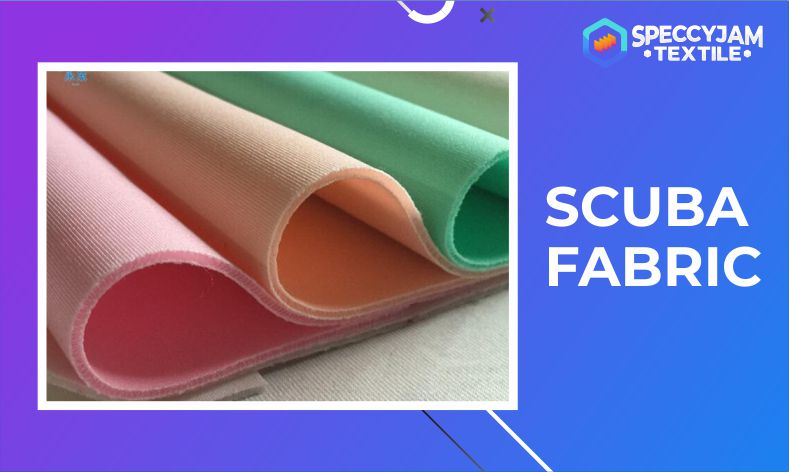Actually, what is scuba fabric? Usually, this term is referring to Neoprene. This fabric is a synthetic, double-knit type that is made from spandex and polyester. Scuba fabric is usually made into dancewear, skirts, and dresses.
Contents
The Origin
Originally neoprene was created during the 1930s by DuPont as a substitute for rubber. Chemically known as polychloroprene. Also known as chloroprene rubber because of its ability as a rubber substitute.
Neoprene also has other uses, such as for wetsuits. Because this material is waterproof. But the downside is this material is not breathable at all, so any sweat will stay on the skin and make it very uncomfortable.
In the end, scuba fabric is used to make clothing that only covers a portion of the body and loose-fitting clothing. The stretch characteristic is ideal for tight-fitting sportswear.

How Scuba Fabric Made
In producing scuba fabric, there is a long process that needs to follow through. Starting from the production of chloroprene until it finishes to become what is scuba fabric now.
- Production of chloroprene. There are two ways of making this substance. First, the base compound reacted to butadiene. The second one reacted to limestone derivative.
- Making the polymer polychloroprene. The resulting chloroprene is then processed through free radical emulsion polymerization.
- Adding additives. The liquid substance resulting from that process is then adding additives to produce a certain result which the textile manufacturer chooses.
- Then this substance is put in a huge mixer and then into an industrial oven to be baked.
- After the baked rubber is cool, the next step is slicing it into thin sheets.
- Spraying and lamination. After spraying those thin sheets with a special epoxy, it is laminated with a modified form of nylon.
- The finished sheets are then sorted by thickness and shipped to the manufacturer to be made as clothing, wetsuits, or scuba gear.
Types of Scuba Fabric
As mentioned earlier, there are two ways in producing chloroprene. By adding either butadiene or limestone derivative to the base compound. Eventually, it becomes two major variants of scuba fabric:
- Petroleum-based polychloroprene. Creating this chloroprene by adding butadiene. It’s inferior compared to limestone-based. This is also unsustainable because it is derived from petroleum.
- Limestone-based polychloroprene. This manufacturing process uses a chemical derived from limestone. More sustainable compared to petroleum-based.
Since limestone is sustainable, this method is environmentally friendly. Moreover, it feels more comfortable due to its closed-cell higher-density structure.
The Uses of Scuba Fabric
What is scuba fabric used for? There is a lot of benefit to using this fabric. Mostly because of its ability to insulate heat or cold. But also its form-fitting characteristic. Here are some examples:
- Neoprene gloves, which are preferable for latex-allergies patients.
- Components for sealing windows and electrical enclosures, noise isolators, and even components in spacecraft.
- Wet suits for scuba gear.
- Swims suits.
- Covers for car seats.
- Form-fitting dresses, sportswear.

Pros and Cons of Using Scuba Fabric
Back to the characteristics of scuba fabric, it has pros and cons of using it. Depending on the end purpose, the cons could be manageable.
- Pros of scuba fabric: high stretch, heat-retaining, flattering to wear, water-resistant, provides extra support, holds pleats well, does not fray when sewed, and is super smooth.
- Cons of scuba fabric: not breathable, disrupts pattern when stretched, melts if you use too much heat, and not biodegradable.
Tips for Sewing Scuba Fabric
Because of its non-fray characteristics, sewing scuba fabric is not difficult. It also does not need any lining because it’s already thick enough.
